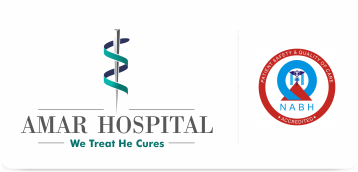In a world where appearances can open doors or build self-confidence, plastic surgery has become more accessible and diverse than ever. Whether it’s reconstructive surgery after an accident or a cosmetic procedure for aesthetic enhancement, advancements in this field continue to transform lives. Let’s explore everything you need to know—from the origins of plastic surgery to its modern applications—with insights that will guide your journey. If you’re considering surgery, finding the best plastic surgeon in Punjab is key to achieving safe and satisfying results.
Why Is Plastic Surgery Called Plastic Surgery?
Despite what some may think, plastic surgery has nothing to do with synthetic materials. The term comes from the Greek word “plastikos,” meaning “to mold” or “shape.” This reflects the core purpose of plastic surgery: reshaping tissues and structures of the body to improve form and function. The word’s usage dates back centuries, emphasizing the craft and artistry behind surgical transformation.
Where and When Was Plastic Surgery Invented?
The roots of plastic surgery trace back over 2,500 years to ancient India, where Sushruta, a renowned physician, performed rudimentary reconstructive surgeries. His work included techniques for repairing noses, making him one of the earliest pioneers in the field. Modern plastic surgery, however, gained momentum during the World Wars, with Sir Harold Gillies leading advancements in reconstructive facial surgery for soldiers.
Understanding this evolution helps appreciate the blend of science and innovation behind today’s sophisticated procedures available in top cities like Delhi and Punjab.
Common Types of Plastic Surgery
Plastic surgery is broadly categorized into:
Reconstructive Surgery:
- Focuses on repairing defects caused by trauma, birth conditions, or disease.
- Common procedures: Burn repair surgery, cleft palate repair, and breast reconstruction after mastectomy.
Cosmetic Surgery:
- Aims to enhance appearance and self-esteem.
- Popular surgeries include:
- Rhinoplasty (reshaping the nose).
- Liposuction (removing excess fat).
- Facelifts and Botox to reduce signs of aging.
Patients seeking comprehensive healthcare might also consult specialists, such as for pediatrics in Punjab or a TB specialist in Patiala, where plastic surgery may be part of broader treatment plans for functional or aesthetic needs.
Will Plastic Surgery Last Forever?
The permanence of plastic surgery results varies:
- Permanent Procedures:
Surgeries like rhinoplasty (nose job) or otoplasty (ear pinning) offer lifelong results. - Temporary Enhancements:
Treatments such as Botox and dermal fillers require maintenance every few months. - Lifestyle and Aging:
Factors like sun exposure, weight fluctuations, and age affect the longevity of cosmetic surgeries like facelifts or tummy tucks.
Can Plastic Surgery Go Wrong?
Yes, complications are possible, but working with experienced, board-certified surgeons reduces risks. Mistakes often arise from choosing unqualified practitioners or discount services. Seeking the best plastic surgeon in Punjab with proven expertise in your procedure of choice minimizes the chances of undesirable outcomes.
Common Risks Include:
- Infection.
- Scarring.
- Nerve damage.
Always research credentials and patient reviews before proceeding.
Can Plastic Surgery Remove Scars?
Scar revision is a key application of plastic surgery. Techniques include:
- Laser Therapy: Reduces the appearance of scars by removing the outer layer of skin.
- Excision and Re-suturing: Surgical removal of scars followed by precise closure to minimize visibility.
- Dermabrasion: A method that refines and smoothens the surface of the skin.
While these approaches can significantly reduce scars, complete removal isn’t always possible. A consultation with a skilled plastic surgeon at Punjab in Amar hospital provides realistic expectations.
Are Plastic Surgery Procedures Painful?
Pain levels vary by procedure:
- Minor Procedures (e.g., Botox): Minimal discomfort.
- Major Surgeries (e.g., tummy tuck): Require longer recovery times and more postoperative pain management.
Modern techniques and advanced anesthesia have reduced pain significantly. Discuss your pain tolerance and post-op care plan with your surgeon to ensure comfort.
Plastic Surgery vs. Cosmetic Surgery
Plastic surgery includes both reconstructive and cosmetic procedures:
- Reconstructive Surgery:
Restores function and appearance (e.g., hand surgery, burn treatment). - Cosmetic Surgery:
Enhances appearance without medical necessity (e.g., facelifts, lip augmentation).
Both require precision and expertise. The best plastic surgeon in Punjab provides comprehensive care tailored to the patient’s needs, balancing aesthetics and safety.
Conclusion
Plastic surgery has come a long way, offering transformative results that blend artistry and medical science. Whether your goal is to heal, restore function, or enhance beauty, understanding the nuances of each procedure is crucial. With the right surgeon, your journey can lead to life-changing improvements. Always prioritize experience, certifications, and a personalized approach—because a well-informed decision makes all the difference.


